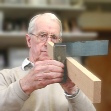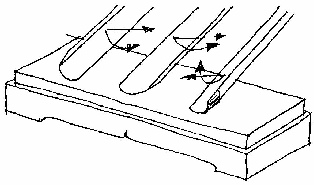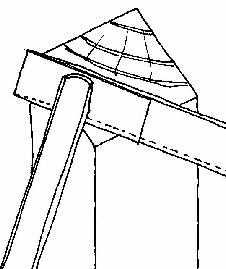

Sharpening carving gouges is something of an art in itself. They differ from chisels in that they are curved and have an "in-cannel" as well as the outer cannel (bevel). The out-cannel is usually ground at 15° but its entire area is polished and slightly curved by the worker so that the angle at the cutting edge might be nearer 20°.
One reason for the incannel is that fine control of the depth of cut depends on holding it at a suitable "operating angle" (my jargon) to the work surface. At 20° it should be in a position such that if the handle is raised, a gentle push will make it start to cut, and cease if lowered a fraction of a degree. Unless you are deeply excavating, the higher this angle, the harder it can be to control the gouge, so a low operating angle requires an acute-angled cannel.
However, such angles can lead to rapid blunting or even crumbling of the edge. By adding a narrow 10° in-cannel to the outer-cannel angle, one makes a "thicker" and stronger edge yet maintains a low operating angle.
When preparing a new gouge or re-sharpening a badly used one, hold it vertically on an oilstone or sheet of aluminium oxide or silicon carbide paper, clench your teeth and draw the edge forwards a few times to deliberately blunt the edge until you have a distinct flat running from side to side of the edge.
What you might find is that one side of the edge is thicker than the other. This could be due to uneven grinding or because the centres of the inner and outer curved surfaces are displaced sideways.
I decided to use a coarse diamond hone to modify the honing bevel. (An oilstone will serve, as also will suitably supported aluminium oxide or silicon carbide paper).


Many sources recommend rouge or crocus as stropping media, but my information is that these abrasives are really for the softer metals used by jewellers.
Green chromium oxide is a more suitable medium. This is sold for use with power sharpening systems using stitched cotton mops or felt pads in place of strops. Once you have a decent bevel they can be quick in action and very convenient.